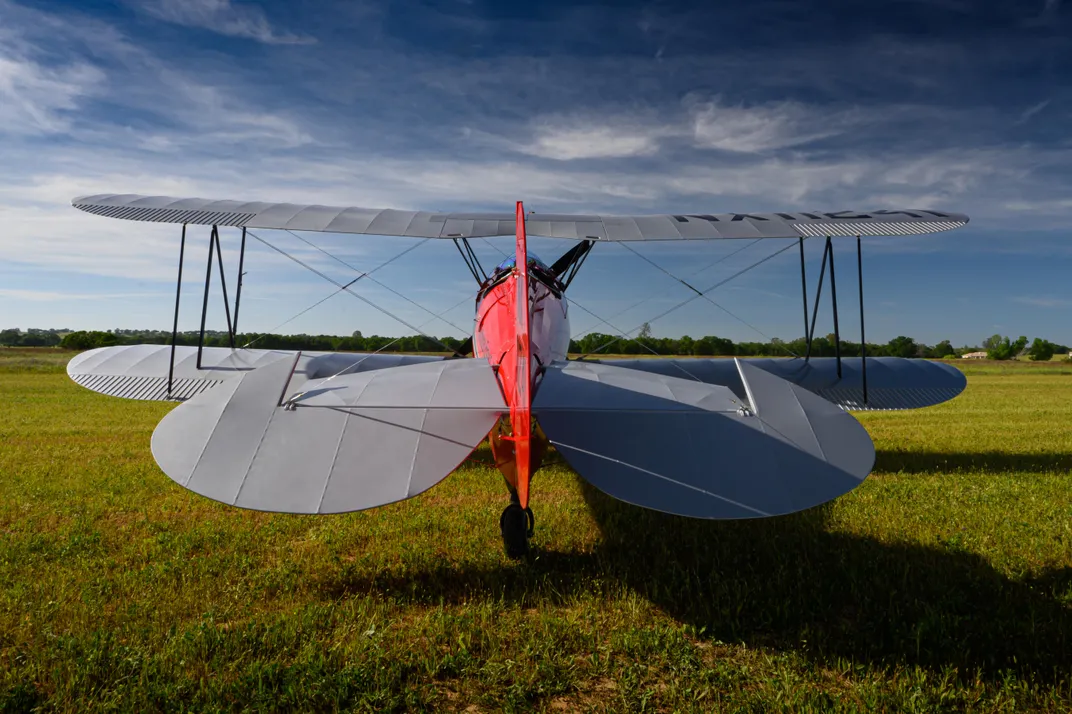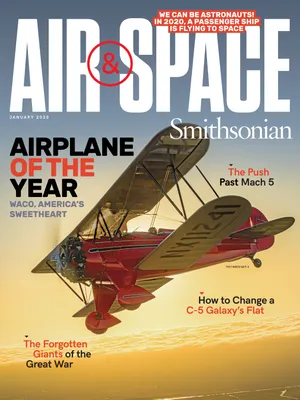Meet Betsy, Air & Space Magazine’s Airplane of the Year
We tallied the votes from our online poll and on-site ballots, and this restored 1931 Waco is the winner.
:focal(3367x2094:3368x2095)/https://tf-cmsv2-smithsonianmag-media.s3.amazonaws.com/filer/2a/8b/2a8b9f9e-776b-449c-8ef1-a1f378a11722/03n_dj2020_dpa2aasf21832_live.jpg)
Chris Galloway swore he’d never do a restoration project. “Everybody told me, ‘Just buy ’em done. It’s so much cheaper,’ ’’ he says. “I don’t know what came over me...and I still don’t know why I did it. But now I’m ready to do another one. I had so much fun restoring this airplane.”
“I know that airplane. I flew it once when Curly had it,” says Phil Coulson, who was president of the American WACO Club for 20 years from its founding in 1990. Havelaar, who had been a B-17 bombardier in World War II, bought the Waco in 1957. (He died in 2010, at 86.) “His name was Marion Havelaar and he was bald as a cue ball, so they called him Curly,” Coulson says. “That airplane has quite a history. It was a real departure from the original F series.”
That would be the INF, KNF, RNF, MNF, and ENF, all built in 1930 and initiating Waco’s maddening (to all but the most knowledgeable Waco historians) system of three-letter designations, which identify engine, wing style, and fuselage type. They are maddening because in its quest for perfection—and customers—the Waco Aircraft Company (which started life in 1919 as the Weaver Aircraft Company; hence, Waco) kept refining its products and offered them in a vast array of wing and body styles and with a buyer’s choice of engines. In the 1930s, there were 34 versions.
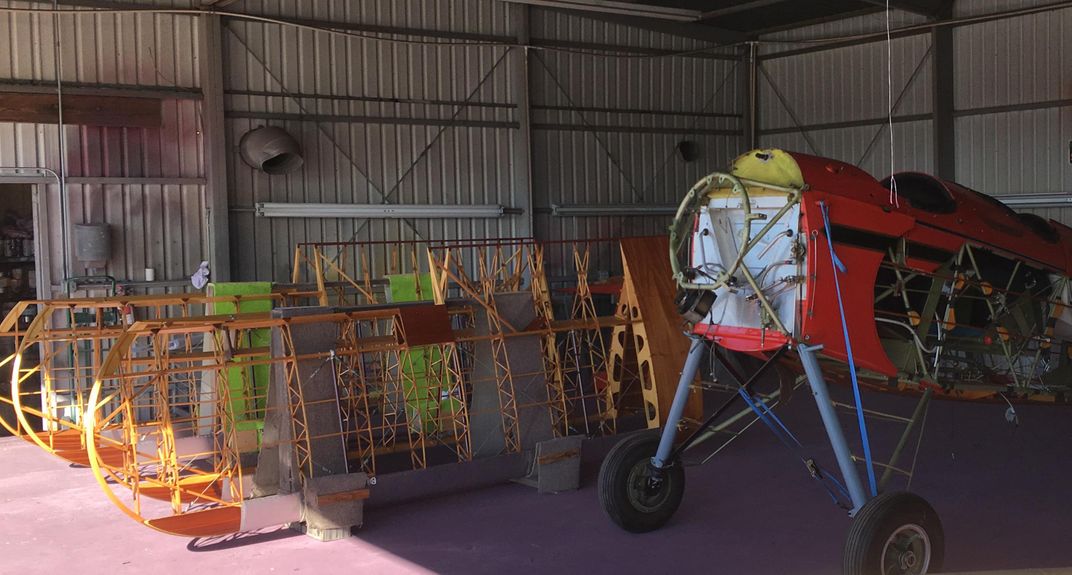
“My dad was one of the early guys to get into the F-2s,” says Scott Woods, who bought Betsy from Havelaar and years later, sold the project to Galloway, “and Curly was the godfather of F-2s.” Woods and his brother visited Havelaar around 2006, with the idea of buying his stash of Waco parts. “We were Waco drunk at the time,” he says, “and we put a deal together for everything he had, including the prototype.” Woods was hoping the two could restore the airplane, but they couldn’t quite manage it. During the sale, he became friends with Galloway and says now that he’s very happy about the honors Galloway has collected.
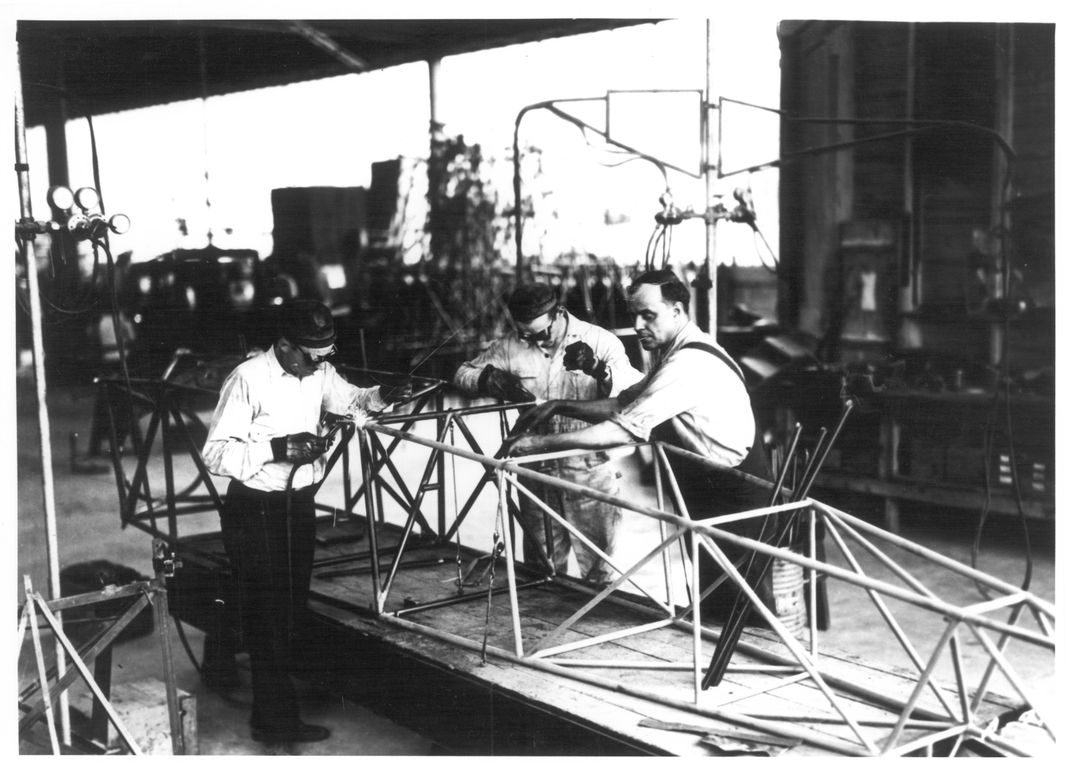
Three years earlier, Woods won the National Aviation Heritage Antique trophy for his 1933 Waco UBF-2. “Bill Allen had his Stearman C3R there, and we took off in formation. I took off like a bat, and the Stearman had a much flatter climb out, and Allen got on the radio and said something like, ‘That’s no fair, man. Cut it out. You’re making me feel bad.’ ”
With a Continental R-670, the engine it tested in the 1930s and the type that was in the airplane when Havelaar bought it, Galloway’s restored QCF-2 has retained its short-takeoff capability, and, as Galloway, Coulson, and Woods, all say, “It’s a nice-flying airplane.” Galloway hired Rick Atkins of Ragtime Aero at Placerville Airport in California to restore the airplane, and the two worked together to make sure that Betsy would stay Betsy.
“Rick and I were really careful about keeping it light,” Galloway says. “Rick calls it ‘death by ounces.’ You add a little here and you add a little there, and the next thing you know, you have a really heavy airplane. And they don’t fly so well.”
“This particular QCF-2,” Galloway continues, “is probably the lightest of the bunch in the F series.”
It was made from an RNF fuselage, according to Atkins. “The RNF had less tubing than the other Fs,” he says. Wacos are built on a steel-tube skeleton: less tubing in the skeleton, less weight. As for a strategy to keep the restored aircraft as light as possible, Atkins says that’s just what happens when you try to keep it as close as possible to the original 1930s airplane. “When you start adding modern conveniences, like radios, the airplane gets heavier,” he says. Betsy has a radio.
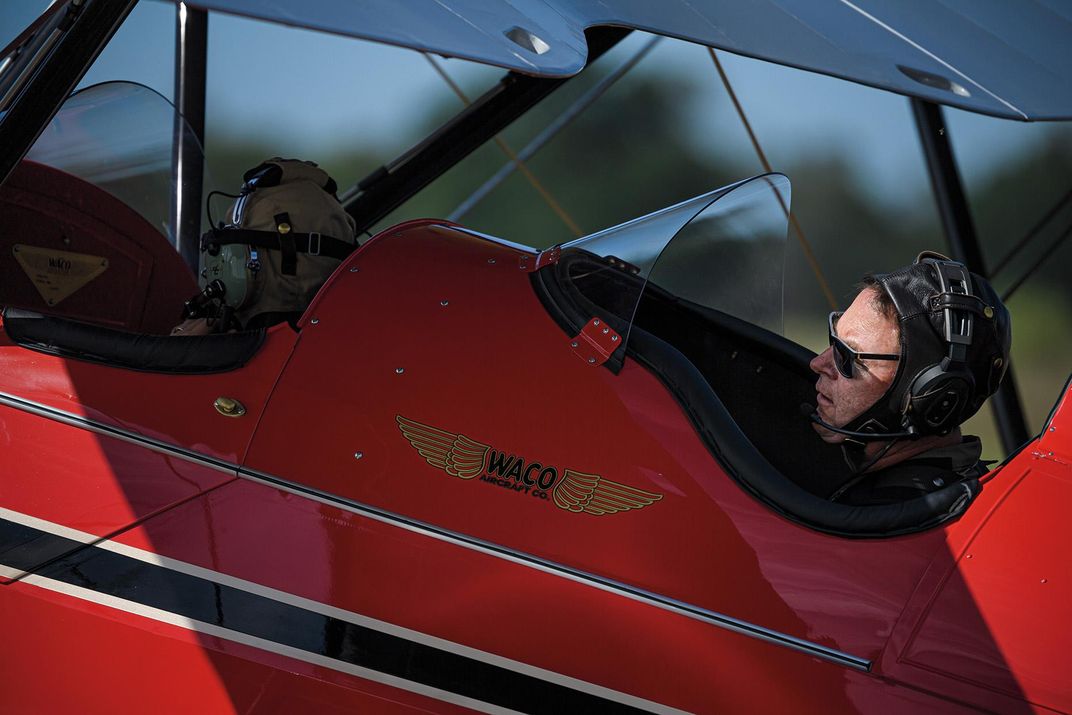
The Navy was considering the QCF-2 for use on the airship USS Macon. The smaller Curtiss Sparrowhawk got the job, but while Betsy was being evaluated at Pensacola, Navy pilots flew it exactly as hundreds of civilian guys flew their Wacos in the 1930s and ’40s: to impress their girlfriends. Wacos are fine aerobatic airplanes, and on weekends, according to Wilcox, the Navy guys found it hard to resist taking their wives and girlfriends on joy rides with a few gentle rolls and loops.
Why Wilcox and the other Continental pilots chose the name “Betsy” no one could say, so I asked Scott Woods to imagine how they came up with it. “I think it’s just such a sweet-flying airplane,” he says. “If you put yourself in the context of the time, they were testing this new, more powerful, nimble, cream of the Waco line, and they were impressed. Its performance endeared the airplane to them.” When it comes time to test fly the airplanes he restores, Atkins ordinarily makes the first flight. He found Betsy as sweet-natured as its name implies. “Some of what the Waco designers did was genius,” he says. For the first time on the F-2 prototype, for example, they made the ailerons of aluminum. He was also exasperated by some of the decisions they made. “Wacos are stable airplanes,” he says, “but they aren’t perfect. What surprised me is that after the first flight, I didn’t have to touch the rigging.” After restorations, 80-year-old airplanes sometimes need slight adjustments to make the wings square—some tightening or loosening of the tension wires. Not this airplane. That didn’t surprise Chris Galloway.
“The people who did the work are just amazing,” he says. “And I think I got really, really lucky because my timing was just right. All these people who are so good and talented were available.” Atkins was able to fit the project into his schedule after the father-son team of John and Scott Shue hand-crafted the wings. The Shues are Waco wing specialists in Emigsville, Pennsylvania, who have won nine EAA awards for restorations.
“I boxed up the wings, shipped them out to them, they called me a year later and said, ‘They’re done,’ ” says Galloway. “I jumped on an airliner and landed in Maryland, picked up a Penske truck, and drove them all the way home.”
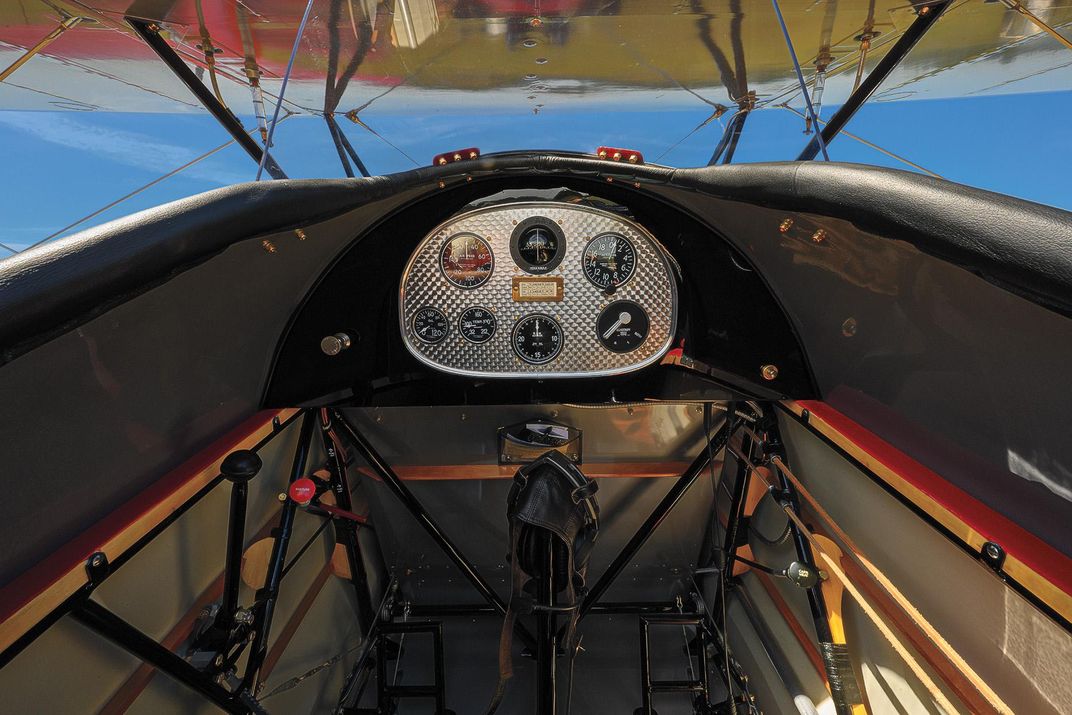
“But in 1930, Ford changed the rules so the only thing that could win was the Ford Tri-motor. And that’s what happened: The Tri-motor placed first, our Waco placed second, and the other Waco CRG placed third.” Even before they aced the Ford air tours, Heins says, Wacos were status symbols. “If you owned a Waco Taperwing airplane in 1929,” he says, “you were something.”
In a brochure for its salesmen, the company instructed them to be respectful of their customers, noting that if a man—and their customers in the 1930s were almost all men—can afford a Waco, he is “a man of consequence.” As a joke, Heins painted “a man of consequence” on the side of his Waco under his name. He hasn’t heard the end of that.
Today, Waco ownership is also a sign of having arrived. It is indelicate to ask pilots what their airplanes cost, but a Waco restoration, especially of a rare type, can be a six-figure proposition, according to Heins and Scott Woods. Once when I was discussing type clubs with a Piper Cherokee pilot, he remarked, “All the Waco owners have much nicer watches.”
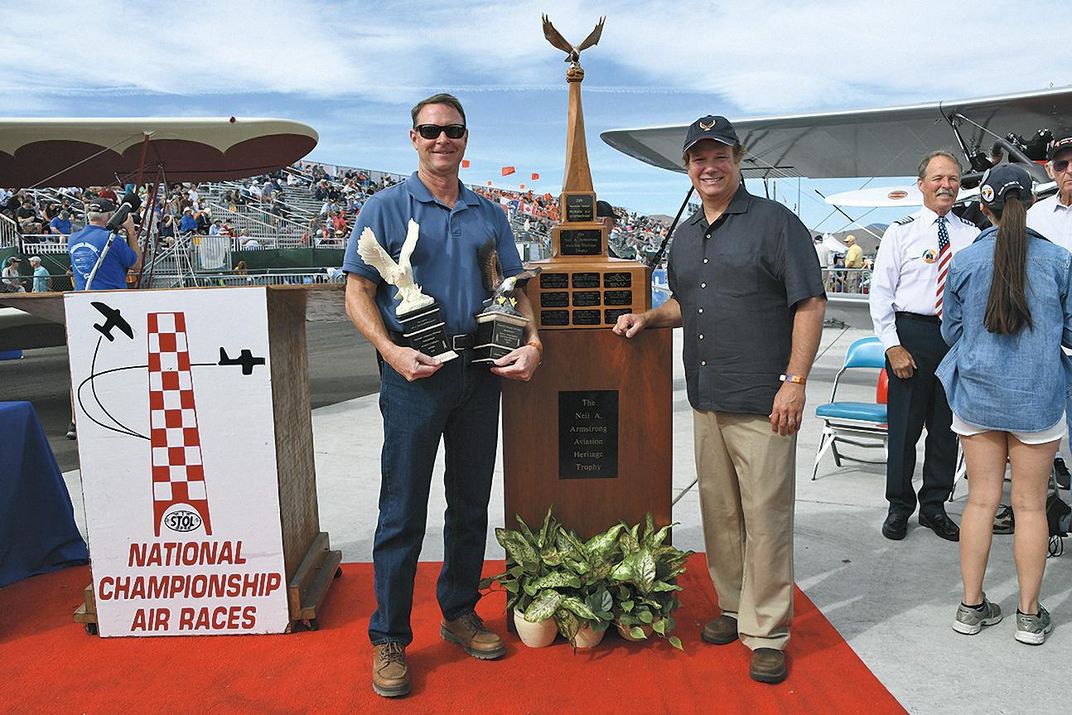
Like flying itself, the art of restoring and operating vintage aircraft is not something learned from a book or a YouTube video. It’s handed down from one person to another. In 1957, Curly Havelaar had a friend with a 1930s Fleet who helped him fly Betsy from Oklahoma to his home in Texas. When Phil Coulson restored his first Waco, a World War II C-47 crew chief named Horace Sackett showed him the ropes. “I always said his brains and my brawn restored that airplane,” he says. “I learned a lot from that man.” Andy Heins learned from two older brothers who worked as aircraft mechanics’ helpers in high school. Scott Woods learned from his dad. For Chris Galloway, it was a childhood friend named Jimmy Rollison, who “was into antique airplanes.” “I didn’t know anything about it, but I thought they were all beautiful,” he says. Rollison, a certified Airframe & Powerplant mechanic and an airworthiness inspector, has advised Galloway on a number of restorations.
Galloway stands at the head of a line of pilots reaching back to 1931. I hope there’s a young pilot somewhere, perhaps one who aspires to be a woman of consequence, who will one day be smitten by Betsy and join the line. I hope the Waco QCF-2 has another fine restoration ahead and comes back, maybe in 2031, as the Airplane of the Year.
